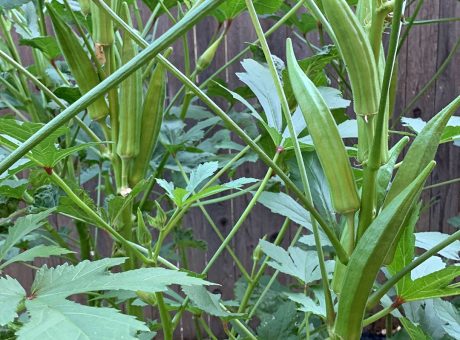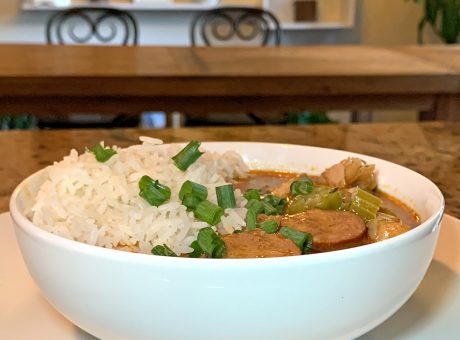
ORGANIC BEAN LEAVES RECIPE WITH GROUND NUTS
Bean leaves are popular as food in some regions, like Africa. People in Malawi, for example, harvest beans as well as bean leaves to make vegetable dishes. They can be boiled, fried, stewed, or cooked with tomatoes and ground nuts. There are different bean leaves recipes, depending on the food traditions of different countries. For this recipe with ground nuts, if you don’t have bean leaves, you can substitute with pumpkin leaves. I posted the recipe of Pumpkin Leaves with Ground Nuts here.
HEALTH BENEFITS OF BEAN LEAVES
Bean leaves offer several health benefits. Harvard University states that legumes such as beans are nutritious and are a source of fiber, protein, folate, iron, phosphorus, and vitamins. Harvard points out that legumes may stop chronic diseases from developing. These include cancer, diabetes, cardiovascular disease, digestive issues, and obesity. The National Institutes of Health also discusses these health benefits of beans in their research.
- Nutrient-rich: Bean leaves are a good source of essential nutrients, including vitamins A, C, and K, as well as minerals like calcium, iron, and potassium.
- Rich in Antioxidants: These leaves contain antioxidants that help protect the body’s cells from damage caused by free radicals. Antioxidants boost immunity.
- Digestion: The fiber content in bean leaves contributes to digestive health by promoting regular bowel movements and preventing constipation.
- Supports Bone Health: The presence of calcium and vitamin K in bean leaves is beneficial for bone health. Calcium is essential for maintaining strong bones.
- Low in Calories: Beans leaves are a low-calorie food, making them a healthy option for those looking to manage their weight.
- Blood Sugar Regulation: The fiber in beans leaves may help regulate blood sugar levels, making them a good choice for individuals with diabetes or those at risk of developing the condition.
- Heart Health: The combination of nutrients, fiber, and antioxidants supports cardiovascular health by promoting healthy blood pressure and reducing the risk of heart disease.

INGREDIENTS OF ORGANIC BEAN LEAVES RECIPE WITH GROUND NUTS
Ingredients are:
- 4 cups fresh tender organic green bean leaves (sliced)
- 1 cup organic ground peanuts (or peanut paste/ peanut butter)
- 1 medium-sized organic onion (chopped)
- 1 large organic tomato (diced) (peeled and deseeded for a low lectin diet)
- Salt to taste
- 1 Cup of water (add more when needed)

PREPARATION & COOKING INSTRUCTIONS OF BEAN LEAVES WITH GROUNDNUTS
- Wash the beans leaves thoroughly and slice them
- Add water to the pot
- Add the sliced beans leaves, onion, tomatoes, and salt to the pot. Add ground peanuts or peanut paste last then put a lid on the pot. Do not stir at this point. Let it simmer on medium heat for about 10 minutes. Don’t let the water dry out. Add water sparingly if needed.
- Stir the contents and let the ingredients mix well. If the leaves are not tenderly cooked, stir occasionally until the bean leaves are tender and the peanuts are fully cooked.
- If the mixture becomes too thick, you can add water gradually to achieve your desired consistency.
- Once cooked, I serve the bean leaves and ground peanuts dish hot, with Nsima. Nsima or Pap is a corn flower paste eaten in Malawi and other African countries).
PALEO FRIENDLY ALTERNATIVES TO PEANUTS
For those following a paleo-friendly diet, here are alternatives to peanuts that can be used when cooking bean plant leaves.
- Almonds
- Walnuts
- Cashews
- Macadamia Nuts
- Hazelnuts
- Pecans
What’s the closest in taste to peanuts
When you consider almonds, walnuts, cashews, macadamia, hazelnuts, and pecans, as substitutes to peanuts, cashews are often considered the closest in taste to peanuts. Cashews have a mild, creamy flavor and a slightly sweet undertone, which can resemble the taste of peanuts. While the other nuts like almonds, walnuts, macadamia, hazelnuts, and pecans each have their distinct flavors, none of them precisely replicates the taste of peanuts. If you’re specifically looking for a peanut substitute in terms of taste, cashews would be a good choice.
What’s the closest in texture to peanuts
If you want a substitute for peanuts based on texture, almonds might be a closer match. Almonds have a crunchiness and firmness that is somewhat similar to peanuts, especially when roasted. While they don’t precisely mimic the texture of peanuts, almonds can provide a comparable satisfying crunch in various recipes or as a snack.



